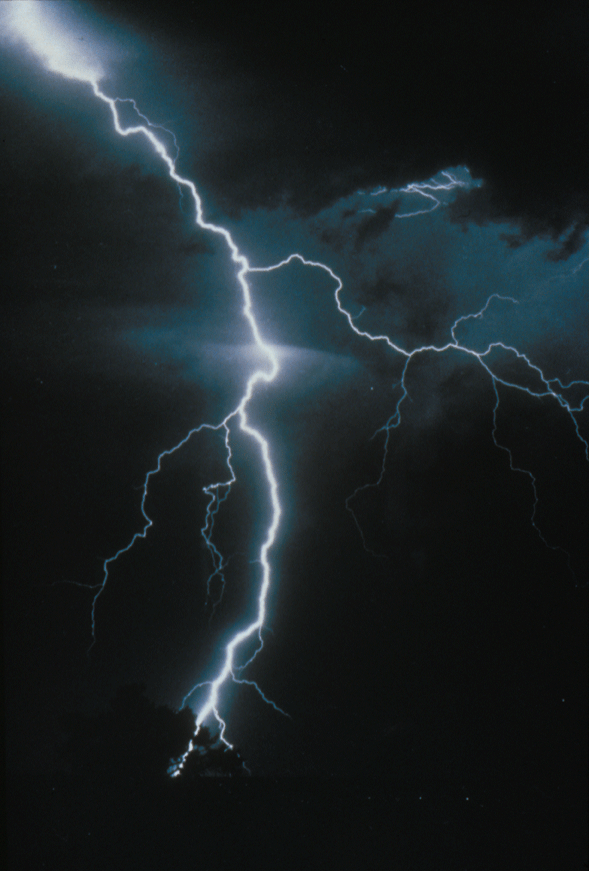Lightning

UCAR
Storms generally evolve with positive electric charge near their top and negative charge from their middle to cloud base. Scientists are not certain how these charges develop, but they probably involve millions of collisions among ice crystals and large ice particles. The negative charge at the cloud base causes a shadow of positive charge on the ground below. The path of a typical cloud-to-ground lightning stroke is carved by a series of stepped leaders, each moving a bundle of charge a distance on the order of a city block. Just before it reaches ground, the step leader induces a huge electric potential--enough to bring up surges of opposite charge from sharp objects or irregularities on the ground. Once the positive and negative impulses meet, an electrical circuit is established, and return strokes flash upward. Branching from the main flash are secondary strokes connected to pockets of charge in the air.